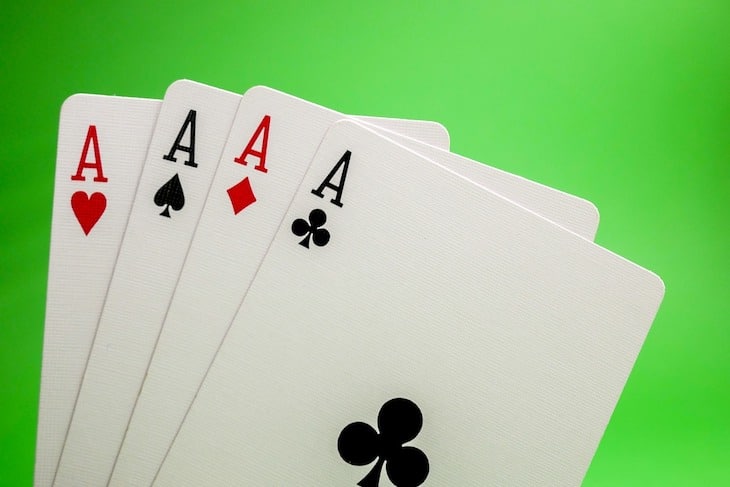The poker hand containing five cards of the same suit is called a flush, unless the cards are in sequence, in which case it is a straight flush. If the cards are all the aame suit, in sequence, and ace-high, then the hand is a royal flush.
Five cards of the same suite are called a FLUSH.
There are four suits each with a total of 13 cards. Thus a flush is a combination of five cards from a total of those 13 of the same suit. This is done in C(13, 5) = 1287 ways. Since there are four different suits, there are a total of 4 x 1287 = 5,148 flushes possible.
For simplicity, we will assume that five cards are dealt from a standard deck of 52 cards, without replacement. No cards are wild, and the player keeps all of the cards that are dealt to him or her.
We will not be concerned with the order in which these cards are drawn, so each hand is a combination of five cards taken from a deck of 52 cards. There are a total number of C(52, 5) = 2,598,960 possible distinct hands.
That’s about .198% — in the long run, about 1 out of 505 dealt hands will be a flush.


Add comment